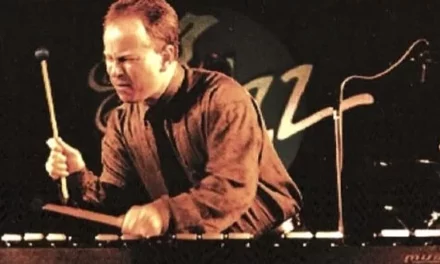The Greensboro Symphony’s opening concert in War Memorial Auditorium on September 16 was the first offering of Music Director Dmitri Sitkovetky’s first fully-planned season. At the post-concert “Meet the Artists,” he said that one rehearsal of five is spent entirely with the strings. The benefits were constantly audible throughout the concert. While he has continued to divide the strings with first and second violins facing each other, he has tweaked some of the other elements. Violas are seated behind the first violins with the cellos behind the second violins, and the double basses are behind the latter on the right this season.
This return to the traditional European seating patterns paid dividends in the opening Overture to The Barber of Seville by Rossini. In part of the fast portion, it was a delight to watch the first violins and violas in tight ensemble, singing the melody, set against the cellos and seconds, playing a repeated figure. Sitkovetsky chose natural, unrushed tempos that allowed the music to register fully, whether in the slow introduction or the brilliant acceleration at the end. Cara Fish’s fine oboe solo included a delicious trill. The horns were wonderfully controlled, and the orchestral balance was fine.
Most welcome was the return of the great violin virtuoso Elmar Oliveira, and kudos for his electing to play the full five-movement version of the delightful Symphonie espagnole of Édouard Lalo. Oliveira stationed himself rather deep on the stage so he was able to have constant eye contact with Sitkovetsky. The sometimes-impish joy in the soloist’s face, particularly during some splendid individual touches in the second movement, was delectable. Sitkovetsky provided impeccable accompaniment that captured what he later described as Lalo’s “special elegance and nonchalance.” Near the end of the first movement, the repositioning of the violas allowed me to hear a charming little counter melody that I had never noticed before on records or in performance. That was followed shortly by a fleet duet between the violin and Debra Reuter-Piveta’s silvery flute. Oliveira’s absolute mastery of technique seemed effortless as it was wielded so expressively. His intonation and crystal-clear articulation in the fastest passages were breathtaking.
The “Meet the Artists” session was most interesting. Instead of his usual c.1729-31 Giuseppe Guarneri del Gesu violin or his exact copy, made by Curtin and Alf in 1993, Oliveira played a five-month-old violin made by Chinese-American luthier Feng Jing, who did his apprenticeship with the one of the copy makers. The two violinists’ “shop-talk” about aspects of their early music education and how they approach works was fascinating.
Unlike some great string virtuosos who have taken up the baton, Sitkovetsky is a solid conductor who has his scores mastered and is able fully to convey his wishes to an orchestra. His musical insights are coupled with clear stick technique. While his interpretation of Brahms’ Symphony No. 1 in C Minor, Op. 68, was well within the established tradition, there was not a whiff of routine about it. All his tempos seemed unquestionably right in their contexts. What a wonderfully full string sonority, beautifully blended, he secured from the opening notes! What an inevitable surging rhythm! Mike Ranelli’s alert and firm-pulsing timpani* anchored all four movements. In the second movement, the violas had a wonderfully opulent sound that they managed to surpass in the opening of the fourth movement. Important woodwind solos abounded. The pairings of Fish’s oboe with Kelly Burke’s clarinet in the second movement was as outstanding as her duet with Reuter-Pivetta in the third movement. Throughout the work, Principal Horn Robert Campbell and his section were models of tight ensemble and ideally controlled tone. The trombone chorale that signals the end came off particularly well. Bravo!
Music lovers will be able to relive this marvelous performance because the GSO will issue a CD in November, using recordings of this pair of concerts. Sales ought to make the high quality of the GSO more widely known.
*Edited/corrected 10/8/04 .











